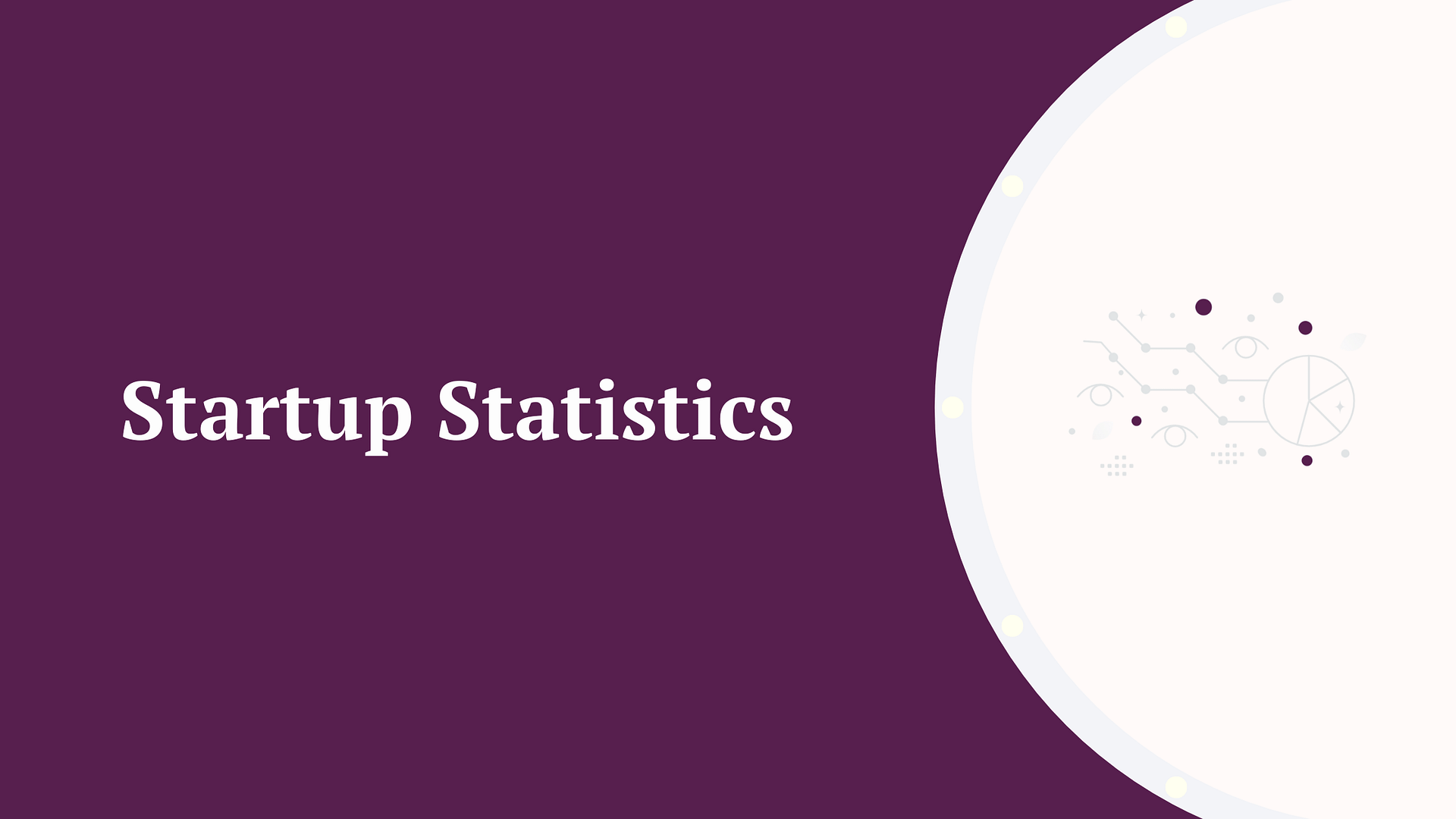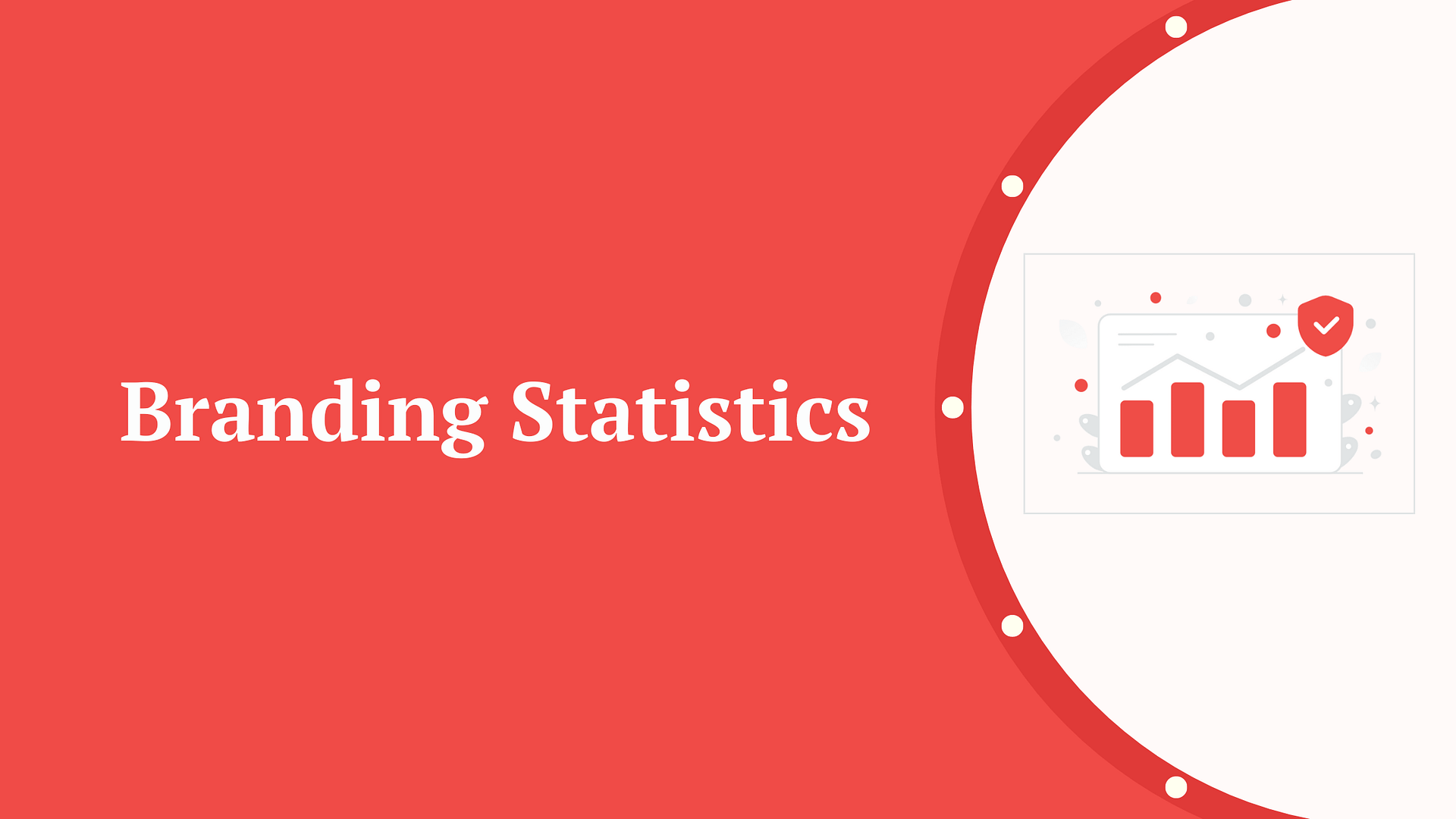Have questions about how to start a finance blog? We have all the answers.
Creating a blog from scratch can be an overwhelming task. You need to write content your market finds valuable, position yourself as an expert in your field, and find exciting topics people want to read about.
You also need to wrap your head around blogging platforms, building a website, and effective monetization strategies, to name a few.
We know how challenging it can be to start 🎬 a successful blogging business, so we created this guide to help you.
Below, we take you through the five critical steps to starting a finance blog. By the end of this article, you will have all the knowledge you need for this new venture.
👉 But before we get there, why should you create a finance blog in the first place?
Why start a finance blog?
Food, travel, health and fitness, lifestyle, real estate, and self-care. These are just a few of the popular blogging niches out there.
But what makes finance so special? Are personal finance blogs profitable? And how much do personal finance bloggers make? 💸
To answer these important questions, we need to look at two areas: research on popular blog niches and the current socio-economic challenges.
On the research side, we found an interesting study from BrandonGaille that focused on bloggers and their income [1]. The study revealed that personal finance bloggers earn more affiliate marketing income than other niches:
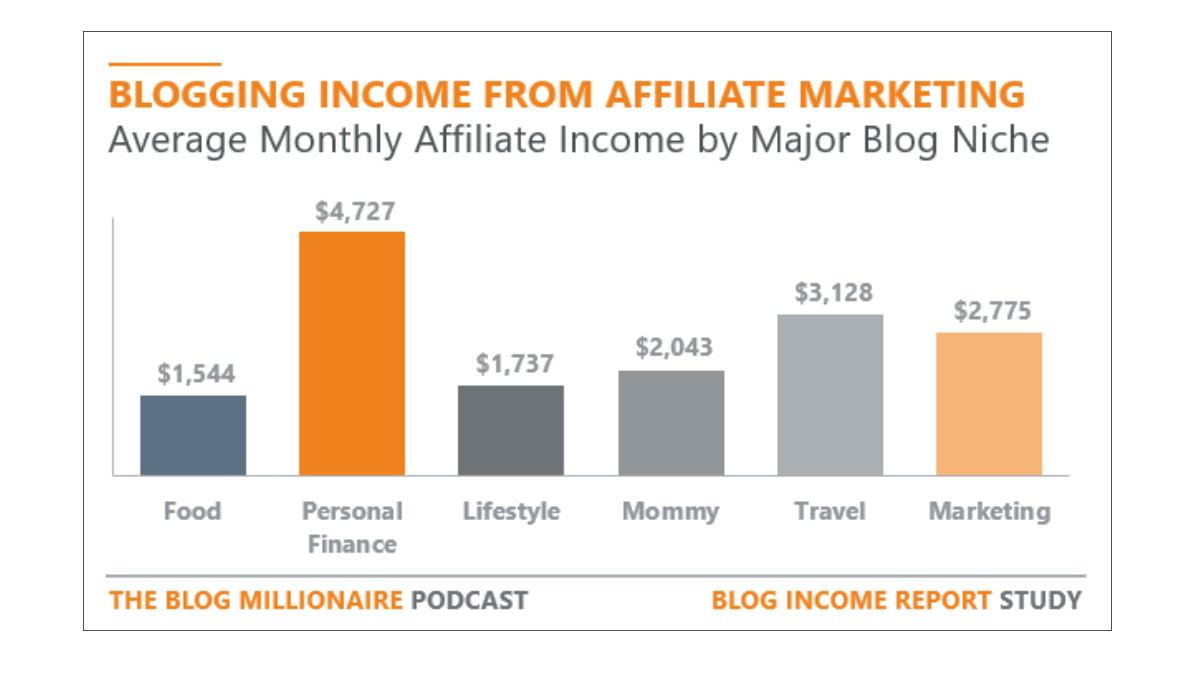
It also revealed that the personal finance niche had a higher percentage of bloggers who made more than $2,000 per month:
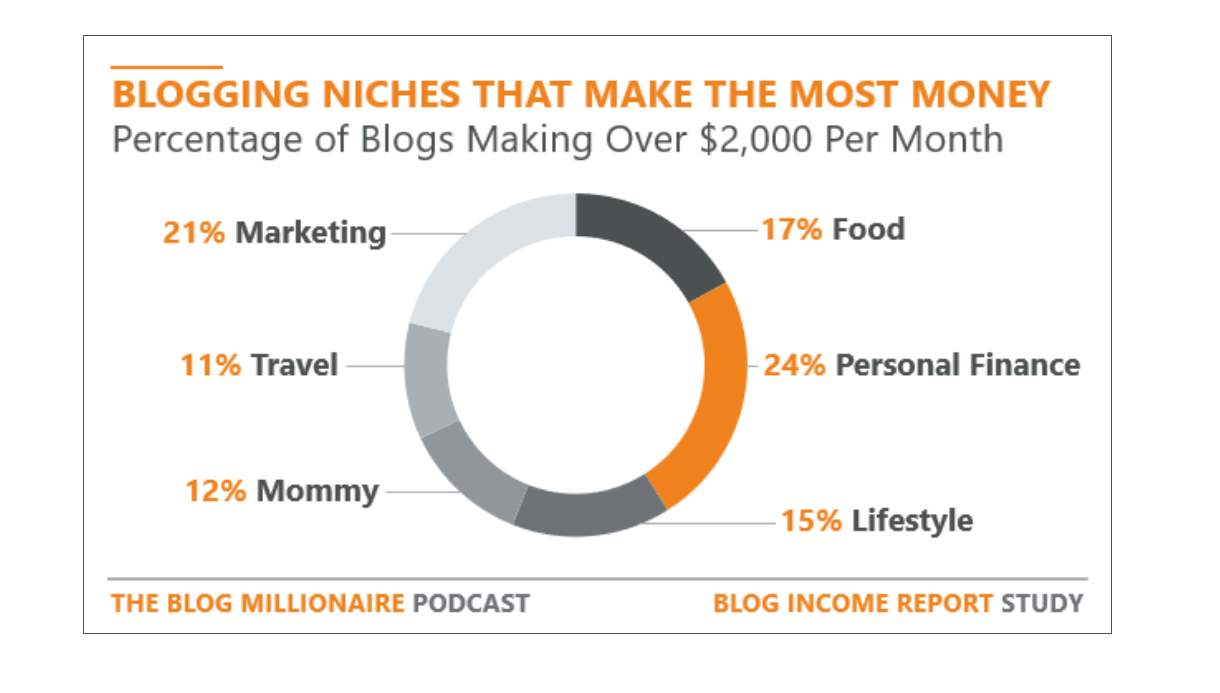
When we look at the socio-economic side, given the Covid pandemic, work lay-offs, and the rising cost of living, it’s no surprise that more people are online, reading about topics like multiple income streams, budgeting, and investing.
People are looking for ways to manage their finances more effectively. So, if you can create the right content that connects with your market, you can build a loyal following that benefits you and your audience.
Now that we’re on the same page about the importance of finance blogs, here are five key 🗝️ areas that will help you lay a solid foundation for your blogging venture.
How to start a finance blog in 2023
- Step 1: Choose a niche
- Step 2: Select a domain name
- Step 3: Pick your web host
- Step 4: Install WordPress
- Step 5: Find the right theme
Step 1: Choose a niche
There are many well-established finance blogs out there. But you don’t have to compete with all of them. What you need to do instead is choose a specific area of personal finance for your blog to focus on.
Having a clearly defined niche will help you understand the personal finance blog ideas you need to focus on so you can create content that positions you as an expert in your field.
Finding the right niche can also help you gain insight into your target audience. Who are they? What are their financial challenges? What types of content are they searching for online?
The clearer you are on who you’re writing for, the more you’ll be able to understand and predict the type of content that will be most valuable to them and help you grow your blog. For example, if you know your audience is largely high school students saving for college, you’ll know to focus on basic advice for budgeting, saving, and managing student loans.
There are many finance niches out there. These include:
- Frugal living and budgeting
- Financial freedom
- Passive income streams
- Saving
- Early retirement
- Insurance
- Investing
- Credit repair
- How to pay off debt
- Side hustles
Some people assume you need personal experience to do well in a niche, but that’s not necessarily true. Experience can help you establish yourself as an expert, but the most important thing is to pick a niche that you’re genuinely interested in and won’t mind spending hours researching and writing about.
Step 2: Select a domain name
The next step in how to start a finance blog is to choose a domain name.
Great domain names are:
- Memorable (easy to spell and pronounce)
- Short and simple (2 – 3 words)
- Available in .com version (.net or .org names are fine but aim for .com names)
- Brandable (not affiliated with existing brands or associated with an unrelated industry)
- Related to your niche (even better if it includes high-traffic keywords for your niche)
- Able to serve double duty as both your domain name and your business name (check out our guide to how to choose a business name for more details)
👉 If you’re stuck, you can use a tool like Domain Wheel’s blog name generator to spark some inspiration.
Just type in a few keywords related to your niche and allow the tool to come up with possible ideas for you. It also has a handy feature that suggests names that “sound like” and “rhyme with” what you searched for, to help with the creative process.
Here’s an example:
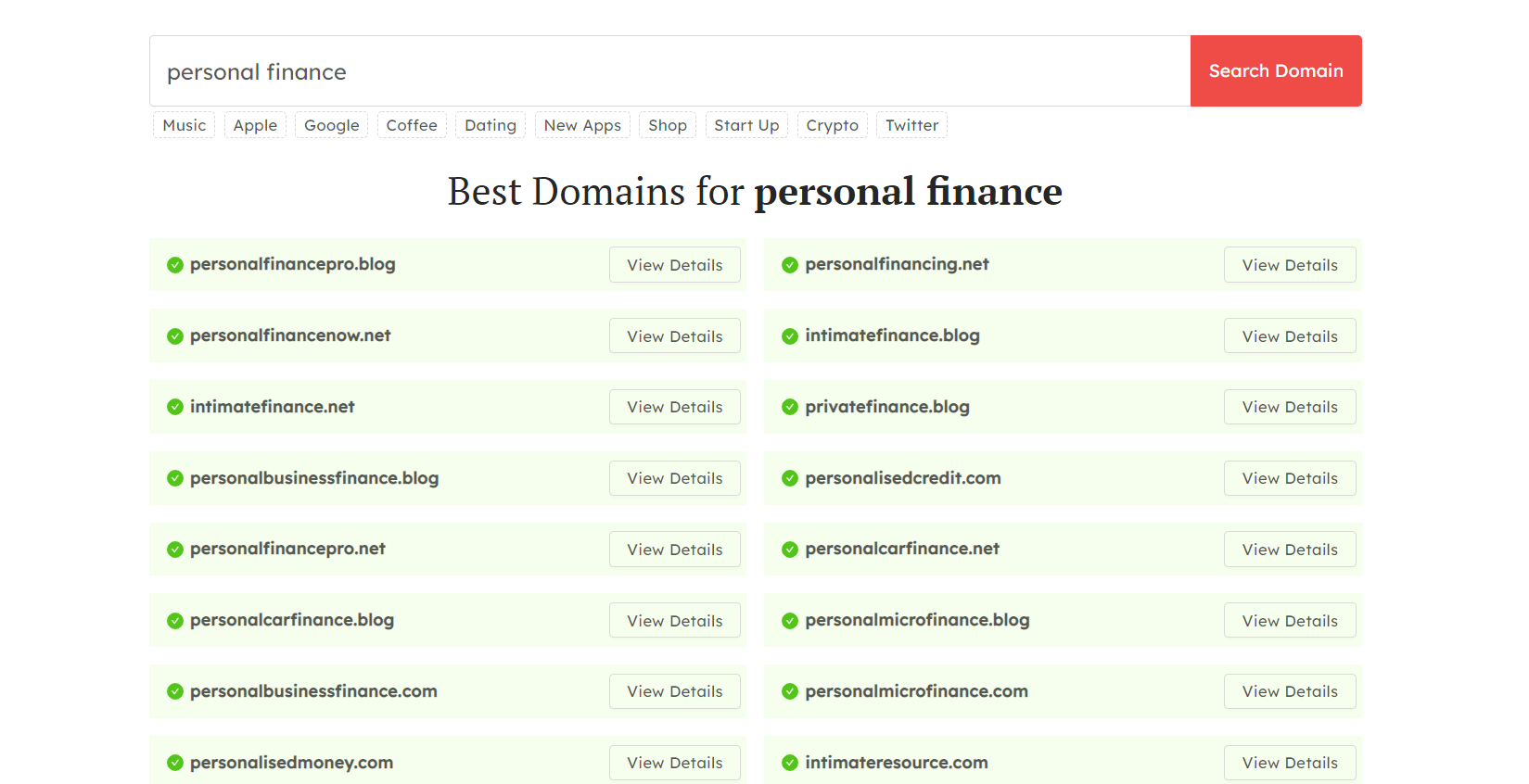
This tool will suggest available domain names, and it’s also free to use, so you can try out different name options as much as you want.
💡Pro tip: To keep things simple, we recommend purchasing your domain name from your web host. You will receive this option as you buy your hosting plan.
Step 3: Pick your web host
The next step in how to start a finance blog is to choose a web host. This is the platform that will help you get your blog online. There are hundreds, possibly thousands of hosts to choose from. However, they weren’t all created equal.
Below, we share three great 😎 web hosting service options:
- Bluehost: This is a popular and reliable web hosting service recommended by the WordPress team. And if you choose it, you get a free domain name for the first year. Bluehost also comes with affordable plans that start from $2.75 per month (purchased annually).
- SiteGround: SiteGround is another excellent web hosting service recommended by WordPress. It offers great loading speeds and good support. Plans start from $2.99 per month (purchased annually).
- WP Engine: WP Engine offers premium WordPress hosting that includes more workflow tools, customizable themes, and overall better site performance. It’s also the most expensive of the three, with plans that start from $20 per month (purchased annually).
Step 4: Install WordPress
After you’ve purchased a hosting plan, the next step is to install the ⚙️ WordPress CMS.
WordPress will be your CMS (Content Management System). As the name suggests, this system will manage your blog, theme, plugins, etc.
If you’ve never done this before, don’t panic! This is actually the easiest step, and most web hosting providers, including the ones we recommended in step 3, will give you a quick and easy way to set up your website.
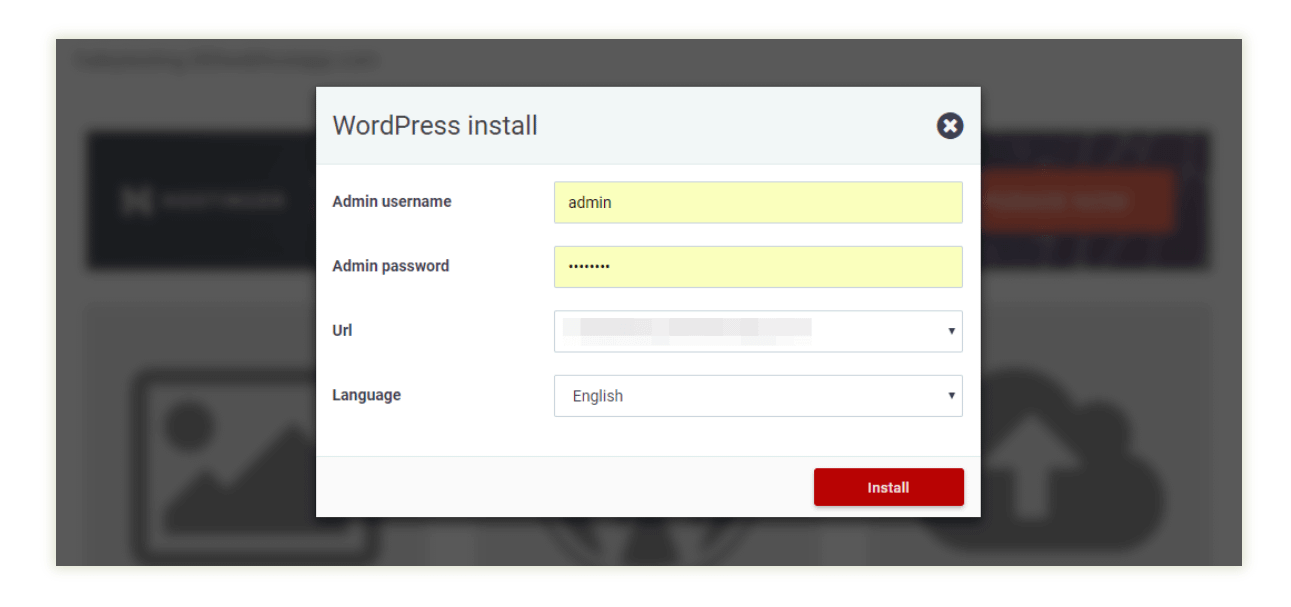
Many hosting plans offer pre-installed WordPress so you don’t have to do anything. Others offer a setup wizard to help you get WordPress up and running quickly. The specific steps will depend on your web hosting provider. And if you encounter any problems, you can always contact the support team, who are always ready to help.
Step 5: Find the right theme
After installing your website, you can log in with your details. This will lead you to your dashboard.

Now comes the fun part — finding the right theme for your website.
To see your current or default theme, click on the name of your website in the top-left corner and then hit “Visit Site”.
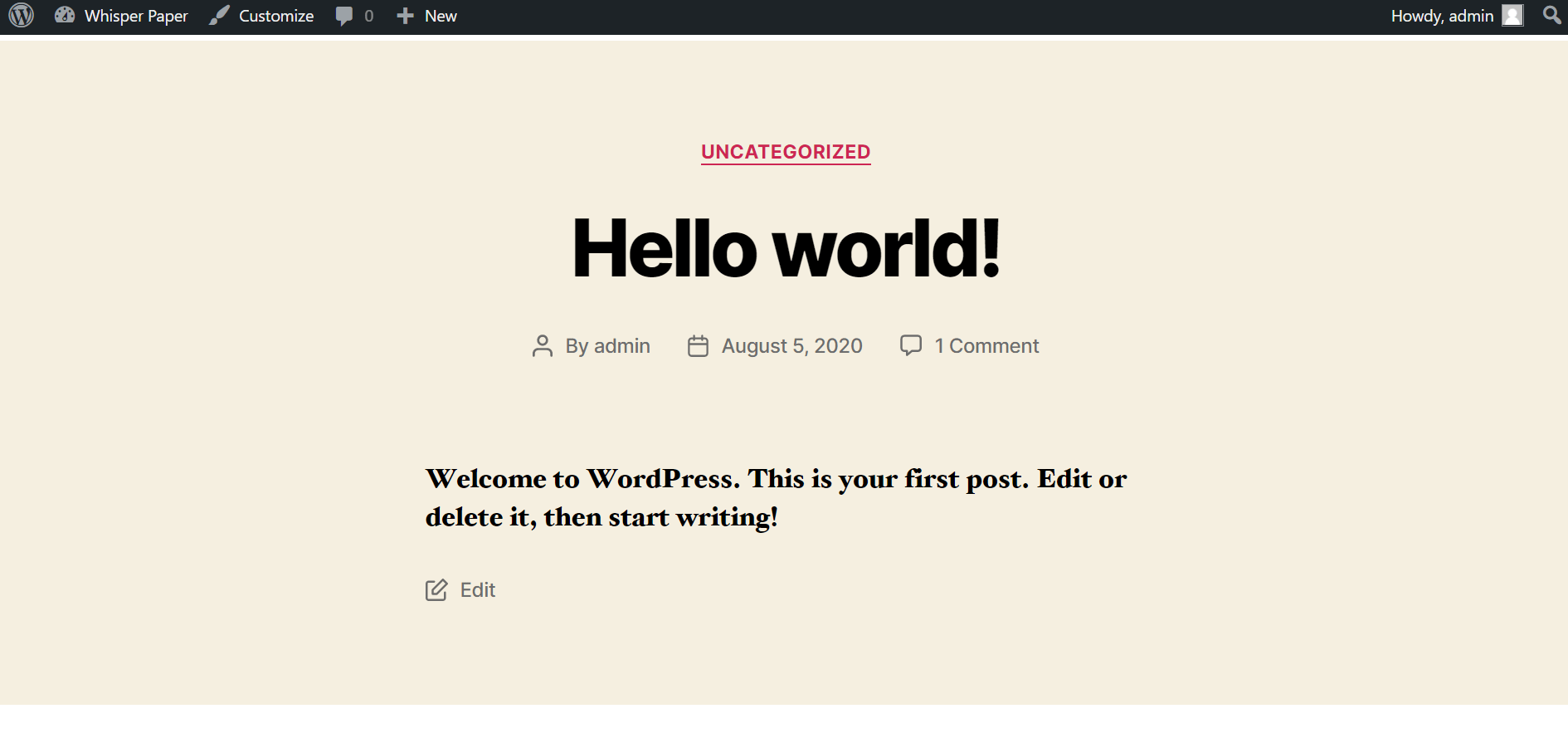
As you can see, default themes aren’t the most exciting.
But WordPress offers many theme options (both free and premium) to help you create a professional-looking website. We recommend you select a theme you can personalize so that your blog is truly unique and stands out from the crowd.
To choose a theme, simply log into your account. Then, scroll down on your left-hand side and navigate to “Appearance > Themes”.
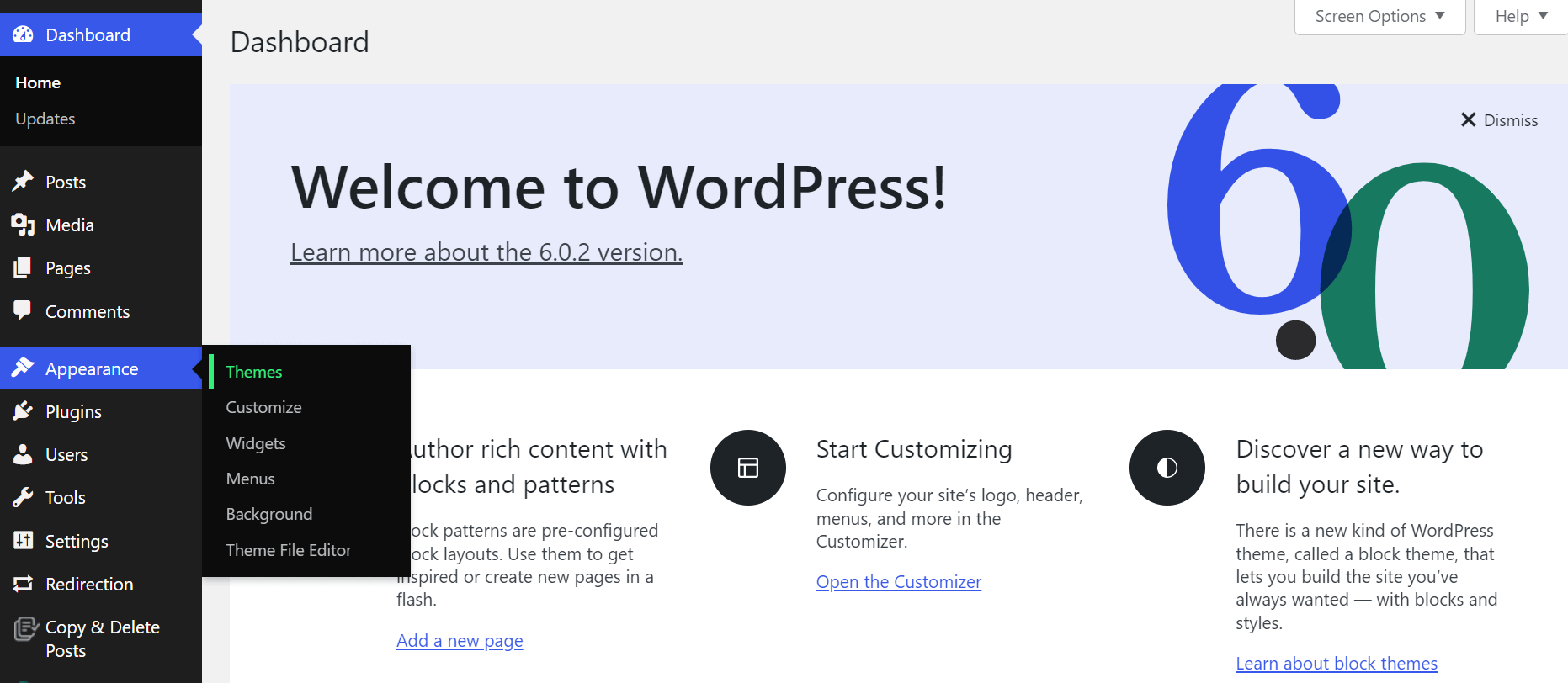
Next, click “Add New” on the Themes page. This will lead you to all the possible theme options available on WordPress. All of the themes listed here can be installed for free, though many themes also have premium versions available with more advanced features.

👉 If you’re a little stuck on which theme to choose, here are a couple to consider:
This theme has a clean design, is easy to customize, and is perfect for a new finance blog. It’s also super fast, so your website visitors won’t have to wait long for the site to load.
Hestia has a modern theme style that’s perfect for new finance bloggers. It’s also SEO-friendly and has a responsive design that allows it to look good on all devices.
Installing a theme is simple once you’ve found the one you like. Just make sure to pick wisely. Examine the theme’s reviews and ratings to see what other users think, and ensure that it is actively updated.
Final advice on how to start a finance blog
Building a successful blog is often a long process that needs lots of your time and dedication. You need to create the right content, market your blog, and be constantly up to date with key industry topics and trends.
To get started, though, all you need to do is choose a niche you’re passionate about, find the perfect blog name, get the right host for your WordPress.org blog, and select a theme that connects with your brand and audience.
📌 Now that you’re armed with this important information, all that’s left to say is — 🙋 happy blogging!
